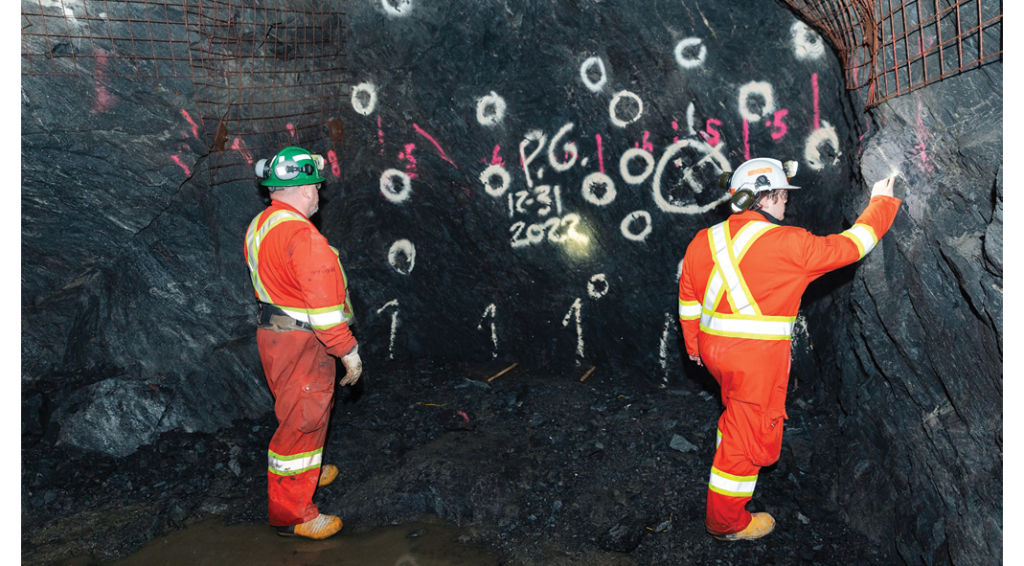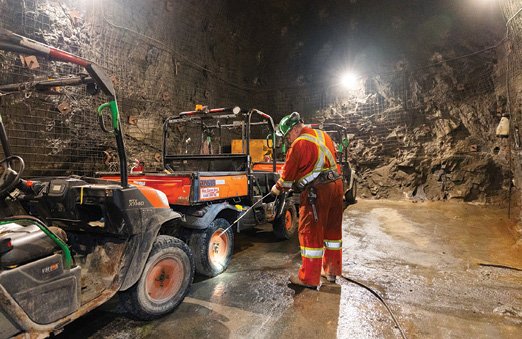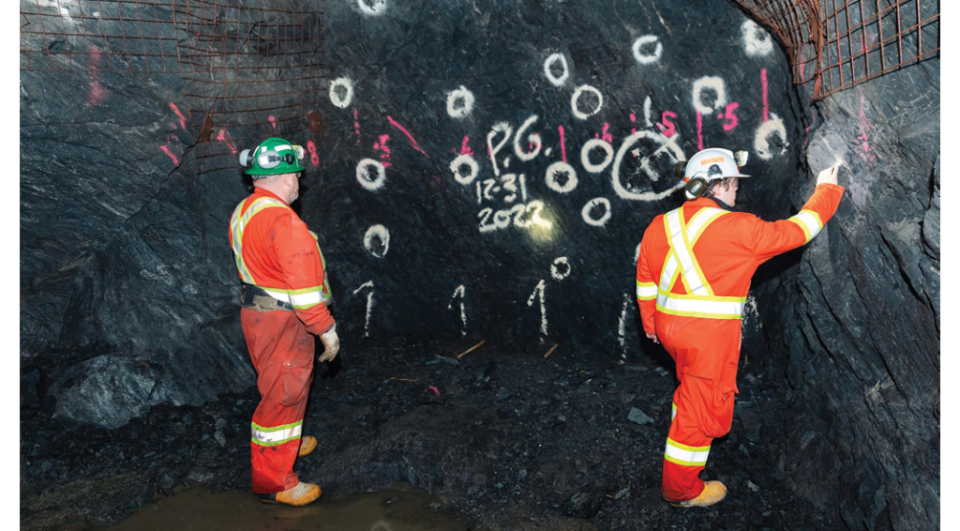
I grew up in Clonmel, Ireland – a town of 17,000 people. Situated on the banks of the Suir River, it is known for its fertile soil, medieval churches, and hardworking people.
In Clonmel, my father ran a quarry business, producing limestone out of rock. It is a crude type of mining. We had an extraction team and a fleet of trucks. I worked in the quarry from an early age, starting as a “gopher” and slowly taking on more responsibility. There were no shortcuts with my father, you had to earn your stripes.
The quarry business was a good training ground. In the evenings, I used to go out with him collecting money. We would literally knock on doors. A lot of our customers did not pay on time. My father was forceful and persistent. It was an important lesson. When you do the work, provide the service, you deserve to get paid.
Because of this experience, I have never shied away from conflict. Canadians are not always good at this. It can be uncomfortable to publicly disagree with a colleague, but it is a vital part of leadership.
After high school, I got a technical certificate that enabled me to go traveling. I solved logistical problems in factories. Working in Australia, I met my wife. In my twenties, we returned to Ireland. I went to university as a mature student and studied engineering. During this period, my wife supported me, and we had a kid.
With a fresh engineering degree in my back pocket, I went to Saudi Arabia to work in the oil and gas business. That is where I cut my teeth as a project developer. I was lucky to have smart, generous mentors. They sent me out in the field, doing routine stuff and learning the ropes.
These days, young engineers often try to bypass that step. They want to be managers and leaders. But without the boots-on-the-ground experience, they get caught out. I always encourage young people to be patient, to be diligent, and to learn from the ground up.

In Saudi Arabia, I discovered that when you ask, “How does that work?”, you will usually get a good answer. Nobody ever says, “I am too busy,” “What a stupid question,” or “Go away.” Approaching challenges with curiosity and humility enabled me to gain knowledge quickly. I learned how to set up a job, how to institute processes, and how to build and motivate a team.
After this experience, I worked all around the world. The Lundin Mining Group sent me to Russia, and then to Sweden, where I lived for four years close to the Artic Circle. We developed an iron ore asset. In the winter, it was dark 23 hours a day. I resided with my wife and children in a village of 600 people.
Working in tandem with the CEO, we developed the resource, created a mine plan, put together a board of directors, and traveled to London to raise money. I learned how to move an $800 million project from A to Z. The mine was delivered on schedule and on budget.
After this, I became the general manager of projects for Rio Tinto, running a series of expansion brown field projects at Iron Ore Company of Canada. This was an existing operation, so the challenges were different. The workforce was already there. It was about integrating a new project with the new ideas, new structures, and new systems.
I was also the vice-president of operations and capital projects at Eldorado Gold. We took the Lamaque gold project from a preliminary economic assessment (PEA) to commercial operation in 18 months. I also worked on projects in Turkey and Greece.
In Greece, there is a limit to how much innovation you can introduce. You must work with the local engineers, the local consultants, the local permitting board, and the government. You must adapt to them. That is how it works, and that is what we did.

I was also the chief operating officer for Skeena Resources where I was involved in advancing the past producing Eskay Creek gold project towards a restart.
The creation and management of teams is the most important part of my job. I completed the senior executive program at the London Business School. This gave me an arsenal of techniques in how to motivate and empower team members. It is not about instilling fear. It is about creating “psychological safety,” so that talented people know it is okay to innovate, to make mistakes, and to learn and persevere.
This brings me to West Red Lake Gold (WRLG.V). Our flagship Ontario asset – the Madsen gold mine – is debt free, fully permitted, and has a brand-new 800+ t/d mill and a tailings and water treatment facility.
At its peak, the asset was valued at over a billion dollars; six times our current market cap. There is smart money heavily invested in the current project: Frank Guistra (10%); Sprott Resource (24%). We purchased this asset for pennies on the dollar when nobody cared about gold.
I am often asked: “How is it possible to purchase a fully permitted gold mine so cheaply?” There is a simple answer: When the mine was briefly in production it was “sub-economic,” which is a fancy way of saying, “It did not make money.” That put off a lot of potential buyers.
After three months’ due diligence, we discovered that the problems with the mine were caused by a compounding series of financial and operational decisions, not the mineral asset itself.
The Madsen land package is 47 km2. That is 11 times bigger than Vancouver’s Stanley Park. With a property this size, and the previous operator’s focus on production infrastructure, the exploration potential at Madsen remains unrealized.
According to an updated NI43-101, the main Madsen deposit has 6.91 million tonnes averaging 7.4 g/t gold for 1.65 million oz. of indicated gold and another 366,200 inferred oz. at 6.3 g/t gold.
The Rowan gold project is 15 km as the crow flies from the Madsen mill. We believe there are synergies between the high-grade resources at Rowan and the Madsen mill.
In September 2023, the published Rowan drill results included an intersection of 8.3 metres at 70.80 g/t gold and 0.5 metres at 1,120.19 g/t gold. Wedge has an additional inferred resource of 431,100 oz. grading 5.7 g/t gold. The September 2023 drill program was intended to expand and upgrade the mineral resource at Wedge.
We have numerous gold-rich satellite targets around the Madsen mine, including Wedge already has an indicated mineral resource of 313,700 oz. at 5.6 g/t gold. Another satellite targets, Russet, has 88,700 indicated tonnes at 6.9 g/t gold, and Fork, which has 123,000 indicated tonnes at 5.3 g/t. We anticipate these satellite deposits will feed the existing Madsen mill, increasing IRR (internal rate of return) and LOM (life-of-mine).
In the mining industry, it is rare to have size and grade working in your favour, but at Madsen, we are seeing both. From what we can see, it is a typical Red Lake system. As we drill deeper into the system, we are getting higher grades.
At US$2,030/oz., gold is flirting with all-time highs in many foreign currencies including that of Canada ($2,700/oz.), Australia ($3,000/oz.), UK (£1,590/oz.) and Europe (€1,850/oz.). We are confident our plans for the Madsen project will demonstrate robust economics at current and lower gold prices.
Working in my father’s quarry as a teenager formed me in a variety of ways that only became apparent later in life. When I am offered a new challenge, my first instinct is to say, “Yes.” That spirit of adventure came from my father, and so did my values and my approach to problem solving. Because of his influence, I am never afraid to put my own ideas forward – and to fight for them.
The idea that I am putting forward now is that West Red Lake Gold has the potential to become a major gold producer. I get up every morning and fight to achieve this objective.
Shane Williams, P.Eng., M.Sc., is the president and CEO of West Red Lake Gold

